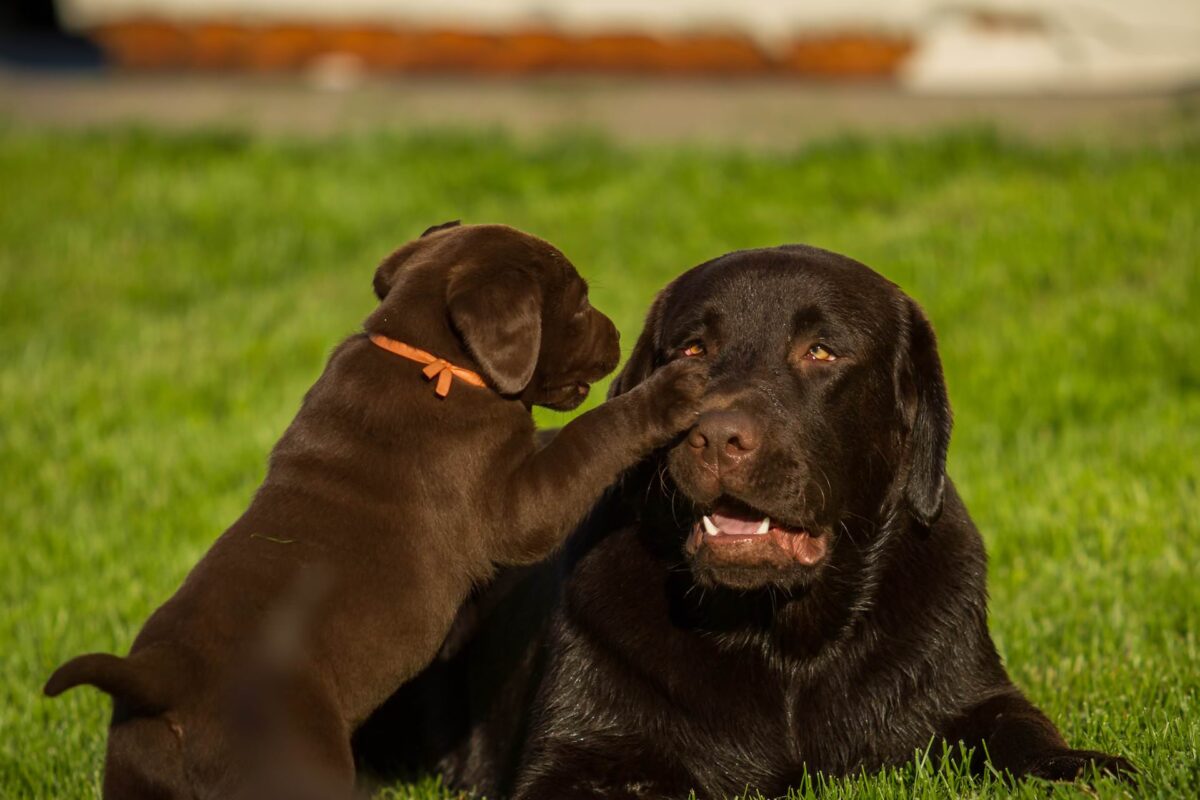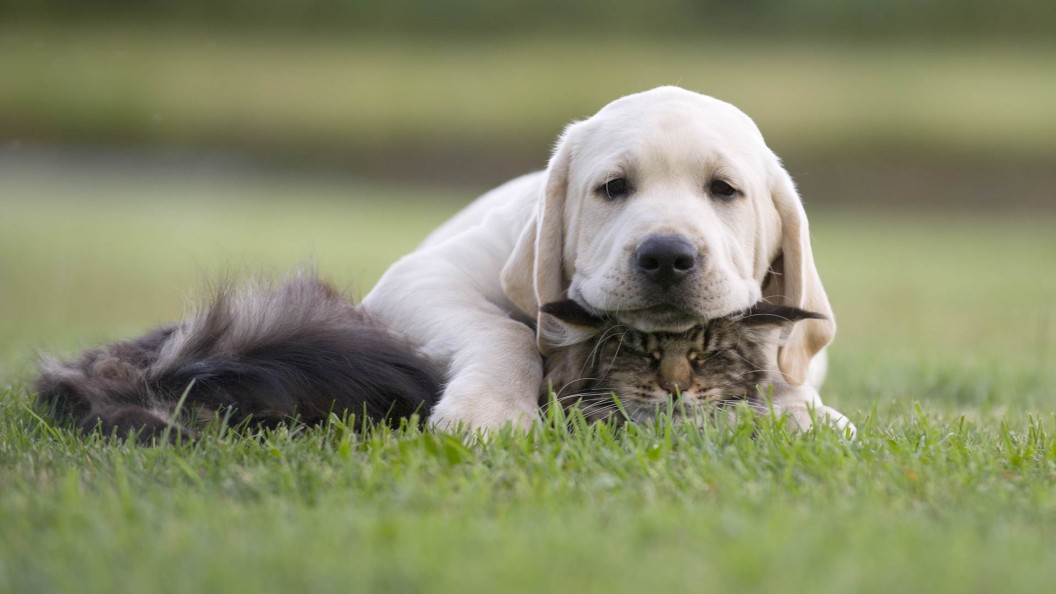
Top tips for welcoming a new puppy to the family
Posted: 06/23/2022 | Categories: Dog Behavior
It’s a big decision to add another member of the family, and if they are a little furry addition, there’s lots to think about! Preparing your home and family for the new addition will make sure their introduction to your pack is a happy one.
Once you’ve decided to get a puppy, studied the breed guides, talked it over with the family, got advice and decided what type of dog would suit you and your lifestyle, everyone will be excited about the new fur baby! Your little puppy will probably be very little when you get him – maybe only 8 weeks old, so what do you all need to do to make sure he fits in right from the start? We’ve consulted with Petplan and their comprehensive puppy guide and come up with these top tips for you.
Preparing for the trip home
- Look for potential hazards. Before your puppy arrives home you need to get down to their level and see what they will see so you can spot possible hazards. Yes, get down on all floors and look for sharp objects that might hurt them, and move anything they could chew or eat that wouldn’t be good for them, out of reach. If you love your shoes, or your kids like their toys, they need to be out of reach as puppies chew a lot!
- Look for toppling hazards. Do you have a wobbly bookshelf or a top-heavy TV that could fall on them? Secure them before there’s a disaster! Check for trailing power cables and secure them out of reach too, or your puppy could chew through them, or pull a lamp, stereo or TV on top of themselves.
- Secure trash cans. You don’t want your puppy having a tummy upset because they’ve raided the trash.
- Use baby gates. They are really useful for confining your puppy to safe zones and out of areas that are off limits.
You will need a crate to bring your puppy home in and which will become their ‘safe zone’ in the house. You could get one that has removable sections that can grow with your puppy or replace it as he grows. To start with it needs to be big enough for him to move around, stand up without bumping his head, stretch and lie down but not big enough for him to wee in one corner and lie in another. You need your puppy to love his crate, so get a good quality, soft dog bed to go inside and do some research on how to get your puppy to love it. There’s lots of animal behaviorists online.
You’ll need some practical, and fun, equipment. Buy food and water bowls appropriate to your puppy’s size and go shopping for toys! Look for a variety of textures such as rope or rubber for instance and make sure they are the right size for your puppy’s mouth. Lots of interesting toy and chew options can save your furniture, so always praise your puppy for choosing their toys rather than your shoes!
You’ll need a harness, leash and a collar with an identity tag, and if you live where it’s cold, you may need a dog coat, too, so your puppy stays warm and dry once he can go out with you.
Preparing your family
If you have kids, they are going to be sooooo excited!
It’s important that everyone stays safe and your little puppy is not overwhelmed or accidentally hurt so supervise all introductions and initial playtimes carefully, and encourage all children to be calm, quiet and as gentle as possible.
Ask small children to see if they can be as quiet as a mouse so they don’t frighten the puppy. Make sure they are as gentle as possible and don’t grab at the puppy as this could trigger a defensive bite. Also make sure they leave the puppy alone while he is sleeping or eating as interference could also result in a nip. They will need lots of reminders of the rules, so keep repeating the message and don’t leave small children and the puppy alone.
Older children need similar rules so encourage them to sit on the floor and let the puppy come to them (treats are useful!). Make sure they don’t chase or throw things at the puppy and don’t grab at them puppy or sit or lie on them, for obvious reasons!
All children will need supervising around the puppy at all times to ensure there are no unfortunate accidents, and even when the dog is older playtime should be monitored.
Introducing a new puppy to your cat and dog needs planning, too.
Cats and dogs can get along…
If you have a cat consider using a cat pheromone spray for a few days before the puppy arrives to make sure your cat is calm and happy. Provide your cat with a sanctuary where they can escape to and the puppy can’t follow, and ensure they can get somewhere high, out of the puppy’s reach. Cat indoor climbing frames are a good way to give your cat a vantage point. Internal cat flaps can give them a useful means of escape to another room or baby gates can help, if your cat can jump over them and escape unwanted attention. Don’t force the puppy and your cat to meet, this could frighten both of them! When you do introduce them, it’s a good idea to have exercised the puppy first so he isn’t too boisterous and some basic training to sit or lie for treats is useful.
Have treats they both like such as small pieces of chicken with you and introduce them through the bars of the baby gate and give both treats for good behavior. You want them both to associate the other with treats! Move slowly and repeat over several days so they get used to each other. Once your cat is calm and doesn’t seem frightened and wants to meet the puppy let them meet in a room but make sure your cat can get up high and escape, and your puppy is on a leash for meetings for a couple of weeks. Let your cat set the pace.
Good body language would be your cat rubbing against the puppy, or batting at him with sheathed claws, and the puppy bowing or gently nudging back. If things get a bit boisterous distract your puppy with obedience tasks for treats and a gentle reminder on the leash. No shouting or scolding so everyone stays calm! It’s a good idea to keep them apart when you are not around.
Dogs will welcome a new puppy but might need a bit of time to adjust…
Introduce the new friends on common ground away from where you feed them and any favorite sleeping spots and put away favorite toys. Put them both on a leash and ensure they are calm and under control. Let them sniff and meet each other but watch their body language carefully. Playful bowing from both is good as is sniffing and positive tail wagging. If there are any signs of your dog being uneasy such as licking his lips, cowering or tucking his tail, stay relaxed and get him to focus on you, giving treats as rewards for obedience tasks and when he looks at the puppy. This way you’re helping him to relax by distracting him and getting him to focus on rewards.
it’s a good idea to only let them meet while on the leash for a while to make sure they have bonded properly and the bigger, older dog isn’t too rough with the puppy. Always give your dog’s their own feed bowls and feed them away from each other. Make sure you spend time with both of them individually and monitor their body language carefully looking for signs of unease when they are together. If your older dog is well socialized, hopefully there will be no problems, but don’t leave them alone until you are sure they are happy together, and there’s no risk to the puppy.
Hopefully these tips will help you introduce a new puppy to you family successfully, so everyone can learn to get along and have lots of fun together!
